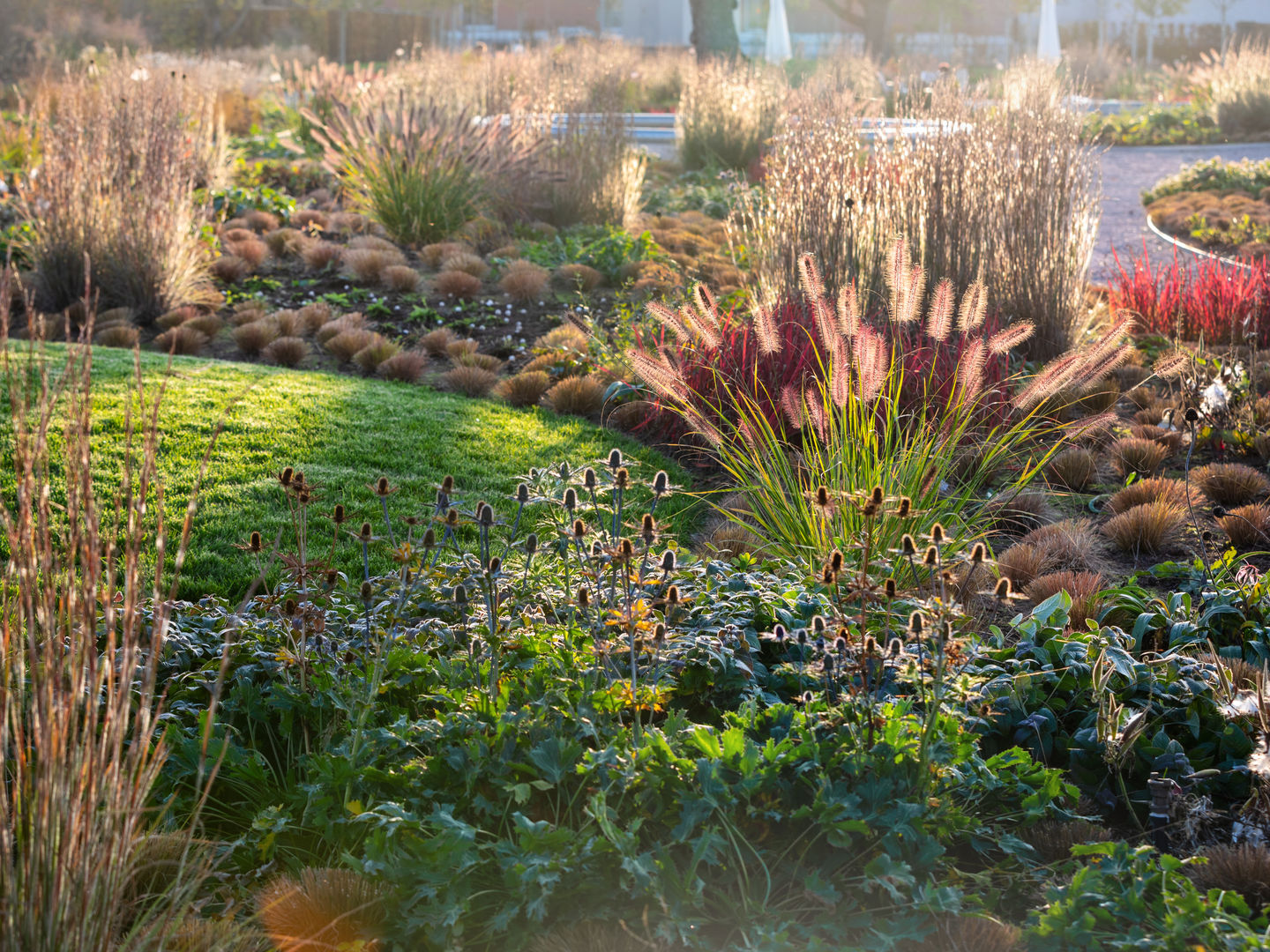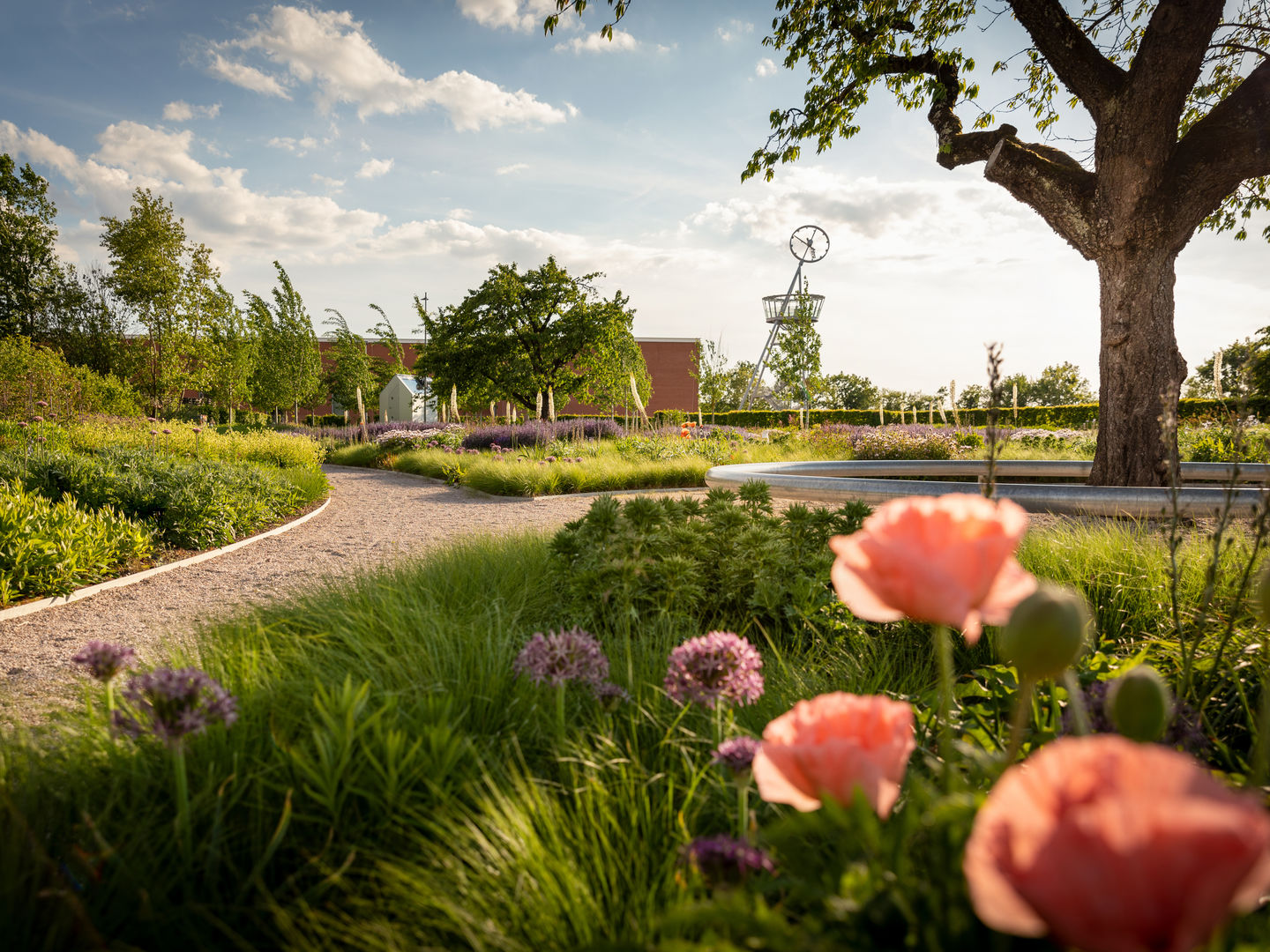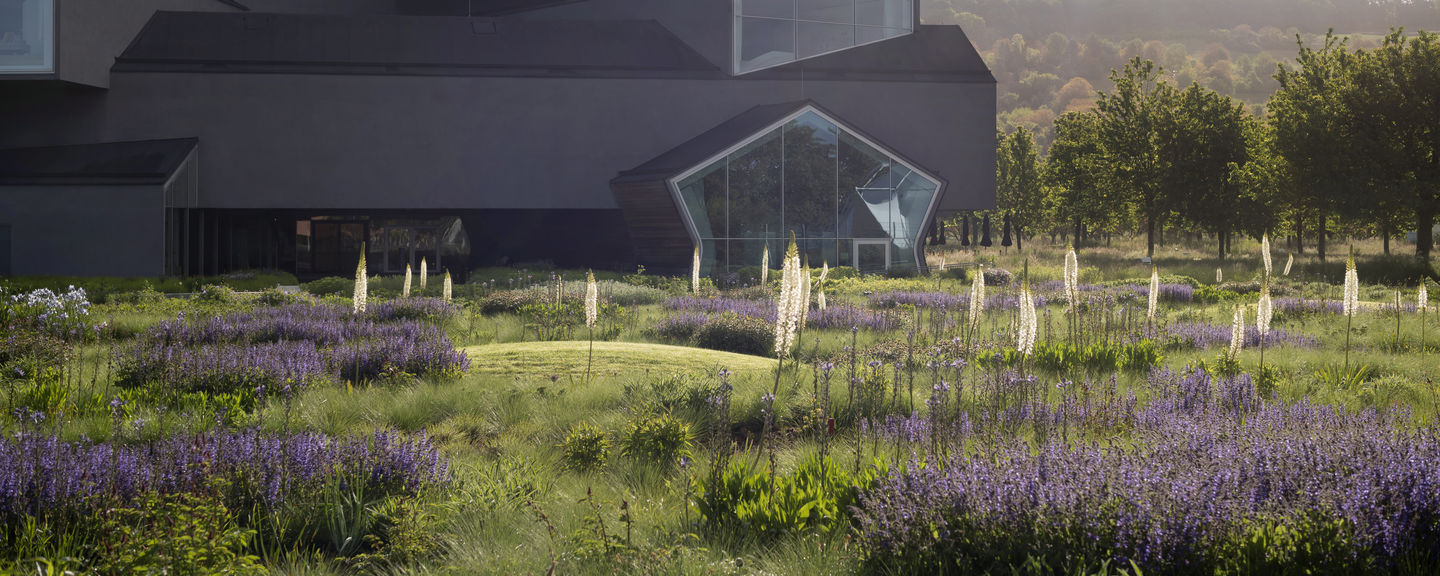The Oudolf Garten on the Vitra Campus
For once it is not buildings that are sprouting up on the Vitra Campus in Weil am Rhein, but plants: situated between the VitraHaus and the production facility by Álvaro Siza, the 4000 m2 garden designed by Piet Oudolf in 2020 is now blossoming in all its variety.
A garden created by Dutch designer Piet Oudolf was planted on the Vitra Campus in Weil am Rhein in May 2020. The artfully composed wilderness will be in full bloom from summer to early autumn.
Dutchman Piet Oudolf is regarded as a pioneer for a generation of garden designers who in the late 1980s began to question conventional practices, finding traditional landscape gardening too decorative, labour-intensive and resource-consuming. Instead they turned to perennial, often self-regenerating plants, shrubs, grasses, bushes and wildflowers, which had been long ignored as garden plants, and favoured an equally unconventional layout of the plantings.
A garden created by Dutch designer Piet Oudolf was planted on the Vitra Campus in Weil am Rhein in May 2020. The artfully composed wilderness will be in full bloom from summer to early autumn.
Dutchman Piet Oudolf is regarded as a pioneer for a generation of garden designers who in the late 1980s began to question conventional practices, finding traditional landscape gardening too decorative, labour-intensive and resource-consuming. Instead they turned to perennial, often self-regenerating plants, shrubs, grasses, bushes and wildflowers, which had been long ignored as garden plants, and favoured an equally unconventional layout of the plantings.
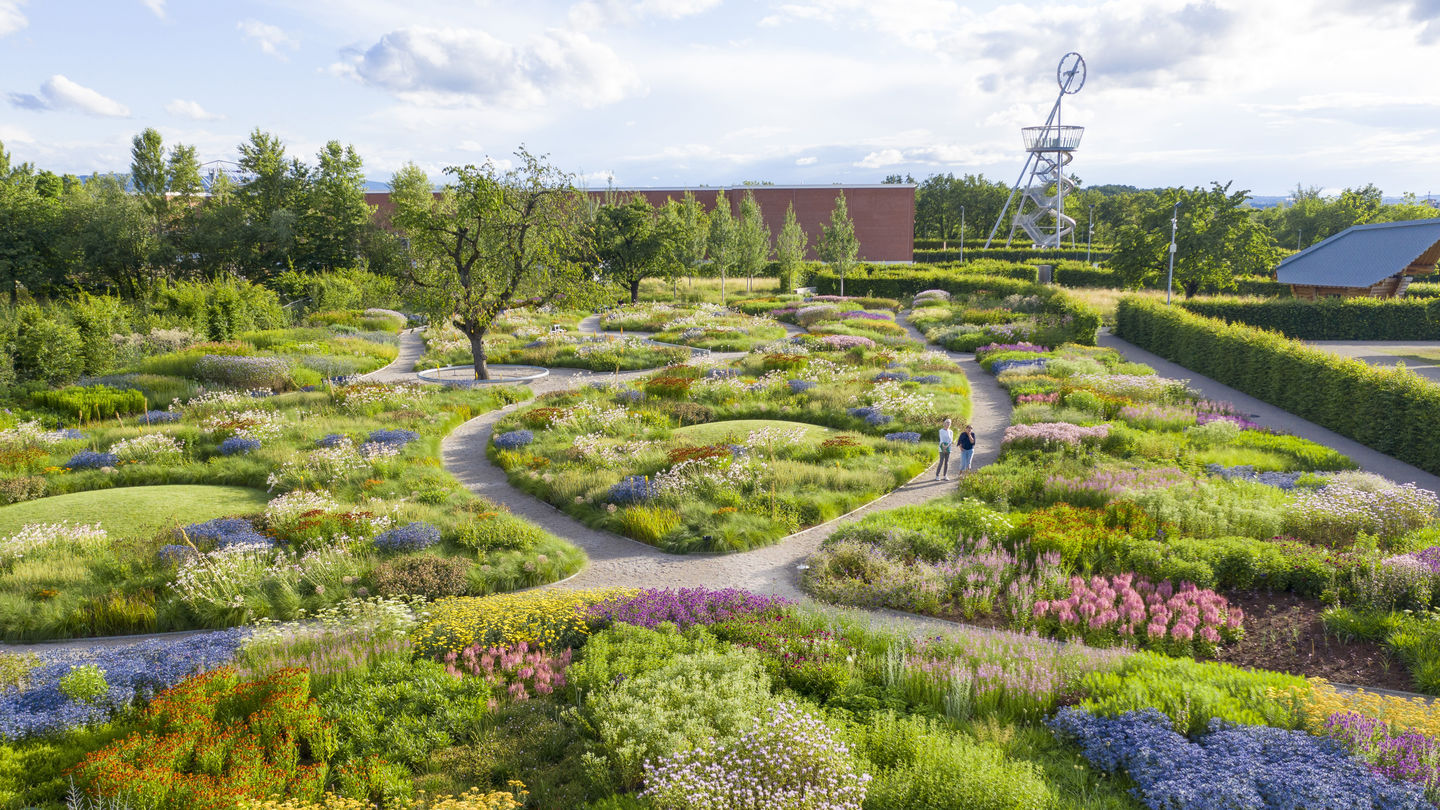
Piet Oudolf
Oudolf does not see himself as the founder of a movement. ‘I leave it to others to say what I am. For some people, I’m just a gardener’, he remarks matter-of-factly. A gardener, however, who has been entrusted with the design of public gardens around the world over the past decades – including commissions for Hauser & Wirth Somerset, the Serpentine Galleries and the Venice Biennale – and whose ‘High Line’ in New York initiated a new discourse on gardening in the city.
‘Piet Oudolf’s garden has added a fresh dimension to the Campus and opens up a new, ever-changing experience for visitors’
What Oudolf’s projects have in common is the idea of a landscape that looks wild and untamed, but which could not exist in this form without meticulous planning. His designs play with certain societal notions of wilderness. ‘I’m really just trying to turn people’s fantasies into reality’, he says. Yet his gardens are not wild at all. Rather, he strives to achieve a balanced composition, or ‘community’ as he calls it, of plants with distinct strengths and weaknesses and different flowering periods and life cycles, so that his gardens provide a sensual experience all year round and accentuate decay as much as high-season phases.
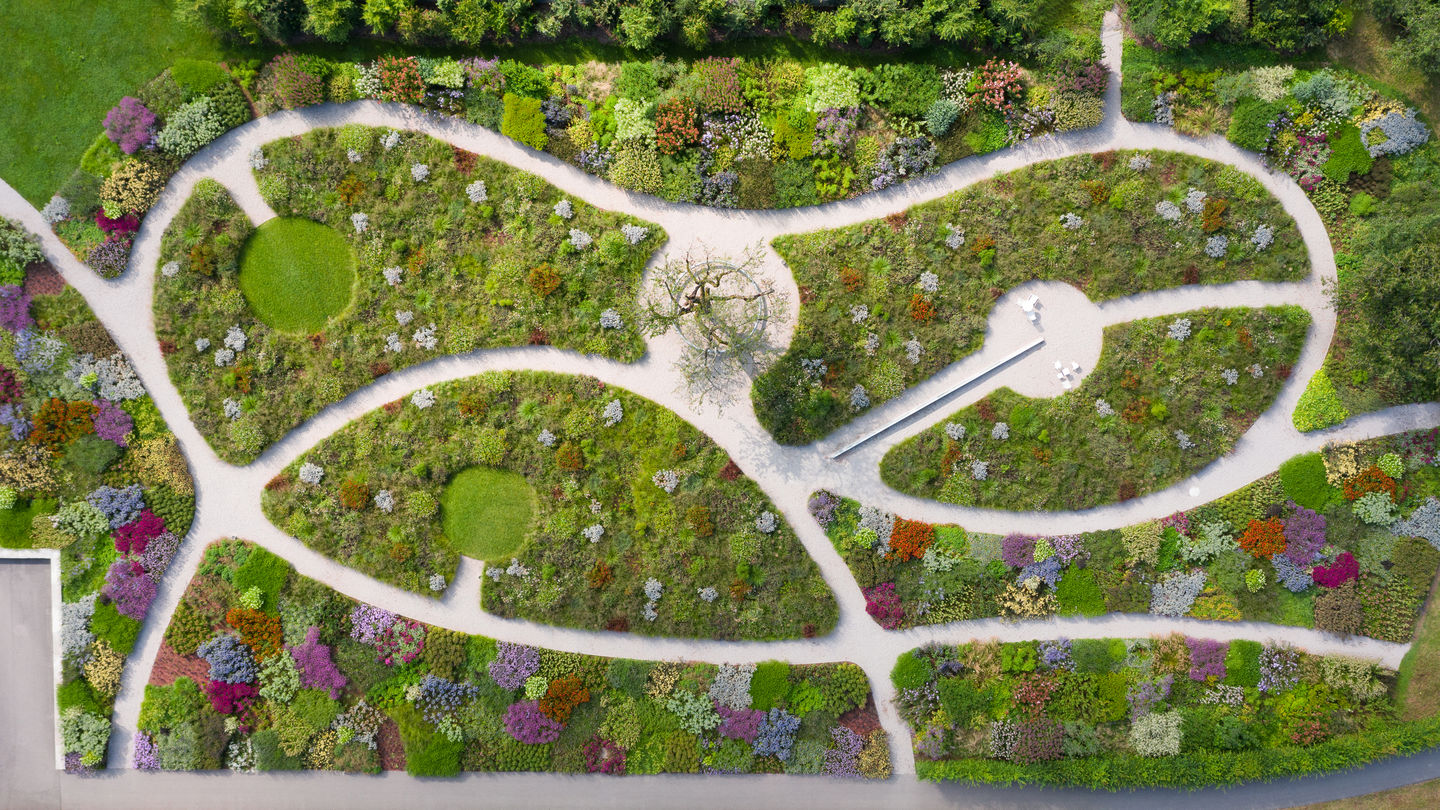
Around 30,000 plants have been used, including specimens with such mysterious names as Persicaria amplexicaule ‘Alba’, Echinacea pallida ‘Hula Dancer’ or Molinia purple moor grass (‘Moorhexe’). They supply the framework for the garden, which largely dispenses with built structures, but also declines to serve as mere decoration for the surrounding architecture. Instead, the landscaping complements the buildings and imbues them with new perspectives, as Oudolf emphasises.
‘I want people to lose themselves in the garden instead of just passing through it’
‘To me, plants are personalities that I can use and arrange according to their appearance and behaviour. Each one “performs” in its own way, but in the end an interesting play needs to emerge from it’, says Oudolf.
